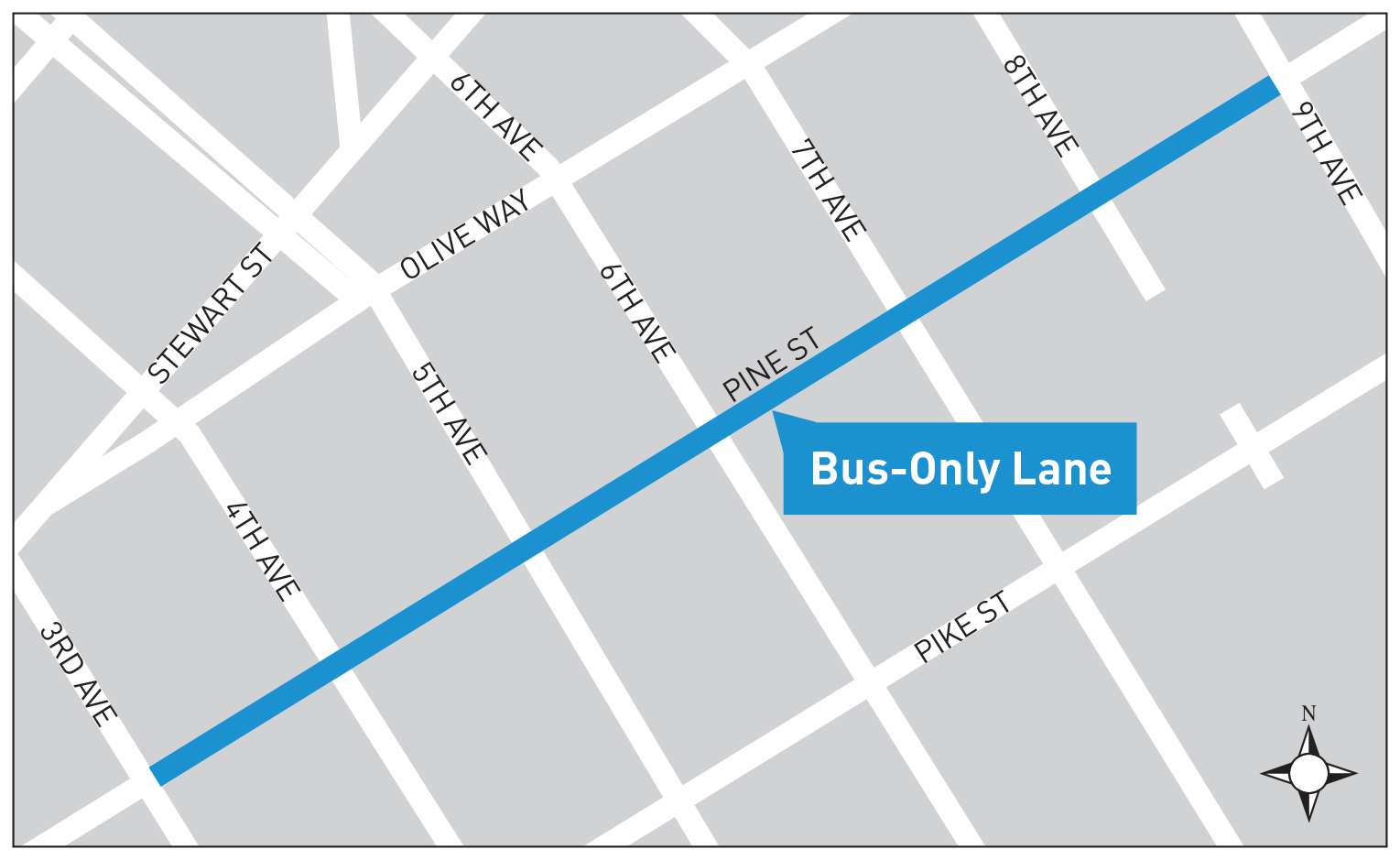Downtown residents received notification last week of a proposed new Business Access and Transit (BAT) lane. Running along Pine Street in the north lane from 9th Ave to 2nd Ave, the lane would complete a circuit using Pine St., 2nd Ave, and Pike St. Meant exclusively for buses and right-turning vehicles, these lanes speed up travel times and improve reliability.
The Pine St. corridor serves 15 routes in total (10, 11, 43, 47, 49, 216, 218, 219, 143, 157, 158, 159, 179, 190, 577), averaging 22 buses per hour during the morning peak and 33 in the evening peak. Almost 7000 people (de)board daily using the three stops along the corridor at 9th Ave, 5th Ave, and 4th Ave.

The improvements would save an estimated 15 seconds per trip. In aggregate, this brings about 5-6 minutes in reduced travel times per hour during the AM peak and 8-9 minutes during the PM peak. While these savings may seem modest, the larger benefit comes from ensuring reliability when the fragile downtown grid breaks down. Like HOV lanes on crowded freeways, bus-only lanes offer smooth sailing through bumper-to-bumper traffic.
People driving and walking wouldn’t experience any change in travel time. But people biking, who would have the option of using the new, less-crowded lane, will see faster and safer travel. My casual observation from walking along the route every morning suggests people biking already prefer the right-hand lane used predominantly by buses for this reason.
This move is part of a broader effort by the Seattle Department of Transportation to increase the reliability and efficiency of the downtown grid. Other projects include the existing bus-only lanes along 2nd Ave, Pine St, and 4th Ave, the City Center Connector streetcar, the Center City Bike Network, and the Third Avenue Transit Corridor.
Pine Street BAT Lane Final Draft Memo

Ben Crowther
Ben is a Seattle area native, living with his husband downtown since 2013. He started in queer grassroots organizing in 2009 and quickly developed a love for all things political and wonky. When he’s not reading news articles, he can be found excitedly pointing out new buses or prime plots for redevelopment to his uninterested friends who really just want to get to dinner. Ben served as The Urbanist's Policy and Legislative Affairs Director from 2015 to 2018 and primarily writes about political issues.

